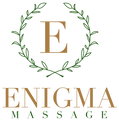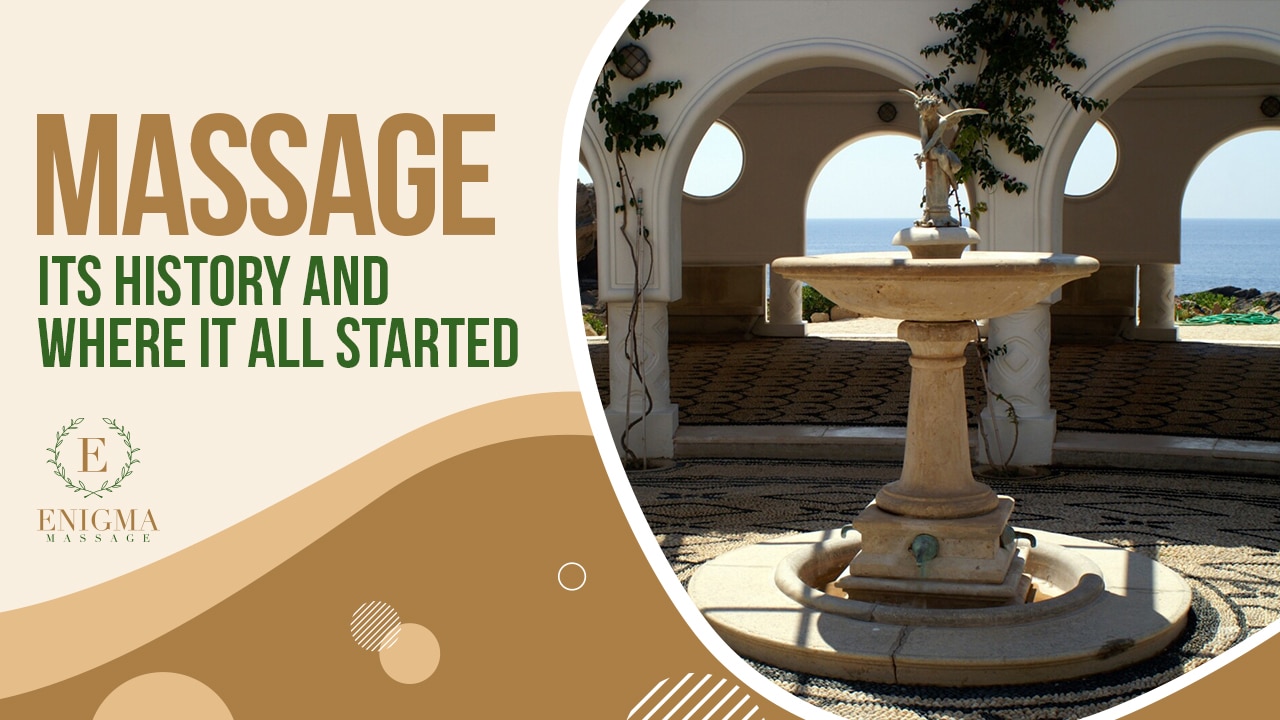Everybody loves a nice massage, and for plenty of good reasons, and there are too many benefits of massage to name. Massage is great for overall health, wellness, athletic performance, pain reduction, and relaxation.
What made getting a massage so popular, and how did it develop?
Hopefully, we can answer that! Let’s talk about the origins of massage and how it’s evolved over the past few millennia.
Origins of Massage: Ancient Chinese Acupuncture
Yes, acupuncture preceded massage by about 200 years. This had a direct involvement in the foundation of massage. Ancient Chinese acupuncture began in 2700 BCE when The Yellow Emperors’ Classic Book of Internal Medicine” was written.
The book detailed applying needles to the body’s meridian points as a way to promote health and wellness. From that, acupressure evolved. This included applying pressure using the hands where the needles would go, which is widely considered the first form of massage.
Acupuncture has since evolved. Still, this laid the foundation for future massage techniques used today.
Ancient Egyptian Reflexology
Only 200 years after acupuncture was formed, ancient Egyptians developed the foundations of what is now considered modern massage. We know this from early Egyptian art, depicting people massaging other people’s feet. This is now widely known as reflexology.
Moreover, this technique applies pressure to the reflex zones of the feet and hands. The goal is to stimulate nerve function, boost blood circulation, increase energy, eliminate toxins, and achieve relaxation for the mind and body. They also used washing and pedicure techniques on the feet for health and wellness.
Japanese Anma
Japanese followed and built upon the Chinese massage techniques around 1000 BCE. Their style of massage was called Anma or Amma. This technique is meant to balance energy, restore the body, and loosen tight muscles and joints.
Over time, this gave rise to the Shiatsu technique aimed to raise energy levels by applying pressure through the thumbs, fingers, and palms. Shiatsu is still widely used today in Japan and worldwide.
Deep Tissue Massage in Greece
This began somewhere between 800 and 700 BCE. The notably strong and athletic Greeks developed a new technique that we now call deep tissue massage. The aim was to improve muscle recovery and athletic performance by reducing knots and sore, tightened muscles. This was done with therapeutic rubbing, similar to the modern massage we know today.
You can trace the roots of modern sports massage back to this era in Greece. The technique was widely employed by physicians who would apply herbs and oils to the skin while massaging. This helped keep ancient Greeks at peak athletic performance!
Moving forward a couple of centuries, Hippocrates even prescribed the art of adding friction. This was a technique used to treat physical injuries. He promoted healthy diets, exercise, fresh air, music, and massage for optimal health benefits.
Of course, this was a major turning point for the art of massage. The effects of this turning point still show today!
Roman Equivalents
There can’t be an ancient Greek anything without a Roman equivalent. Massage is no exception.
At the same time as the Greeks, the Roman Empire began using it in their culture. Wealthy elites would have massages in their homes and emperors in their palaces. However, everyday people would flock to their local baths for “spa treatments.” These included full-body massages to stimulate circulation and ease joint pain.
By the 1st Century BCE, the Roman physician Galen echoed Hippocrates. He advocated for and used massage therapy on emperors to help keep them in good health.
Yet, massage declined in the western world after this period. It wasn’t until the 17th Century AD that it began its revival. Believe it or not, modern western massage wouldn’t begin for another 200 years after that!
How Has Modern Massage Therapy Evolved?
With nearly 5000 years of experience, humans are still perfecting this ancient craft. Fortunately, massage therapists, physicians, and other specialists still continue to improve upon the techniques we know today. Here’s a little about how massage has evolved!
American Massage Revival
Again, massage fell out of widespread practice for at least 1600 years. Many practices were still used in the Eastern world, but with limited evolution.
In the 1700s, it was common for early American settler physicians to hire “rubbers.” These were women hired to treat orthopedic issues with rubbing, pressure, and friction. Still, massage was quite limited.
Yet, once the 1850s arrived, medical gymnasts began to use physical movement and manipulation. This process was developed in Sweden, and it required far more comprehensive training in anatomy and physiology.
Swedish Massage
The reason Swedish massages are so well-known is that they were the most recent to adopt massage into their culture. Thanks to this reprisal of massage in the 1800s, we now have the modern relaxation massages we know and love today.
More specifically, it was Swedish doctor, gymnast, and teacher Per Henrik Ling that created the method now known as the Swedish massage. It was designed to help relieve chronic pain for gymnastics athletes and is now known for its relaxation benefits.
The style involves stroking, pressing, squeezing, and striking. It is a little more “topical” than deep tissue massages, meaning that these motions are a little more gentle on average. Still, these techniques are widely used worldwide in modern massages and are now arguably the most popular form of massage today.
Johan George Mezgar then soon new techniques into the style. These techniques were called effleurage, petrissage, tapotement, and friction. Effleurage uses long, gliding strokes, which we commonly associate with Swedish massages.
Conversely, petrissage uses rhythmic kneading, skin rolling, lifting, and push-pull movements. Tapotement uses a beating or tapping administered with the side of the hand. Sometimes, Swedish massage therapists may use a cupped hand or fingertips for this practice.
Lastly, friction is a physically-demanding technique that consists of deep, circular movements with the thumbs, fingertips, palms, and even elbows. This technique is designed for deep tissue penetration. Yes, traditional Swedish massage does include deep tissue techniques!
Better Understanding of Anatomy
Especially in the last couple of centuries, our understanding of the human body has grown exponentially. Most of these advancements come from the 20th century. This allowed Swedish massage to advance more quickly than any of its predecessors.
As a result, we now understand far more about anatomy and physiology than ancient Greeks, who may have used massage to their athletic advantage.
For this reason, massages of all types have evolved quite exponentially. We have a better understanding of how muscles work, the patterns of muscle fibers, the causes of muscle knots and tension, and how massage can be used to treat these issues. All of this knowledge makes us better equipped to develop more effective massage techniques.
Better Understanding of Stress
Many styles of massage are meant more for relaxation than for athletic performance. Having a better understanding of how stress affects the body can help us improve relaxation by removing toxins, lowering cortisol levels, and reducing physical symptoms of stress such as tension in muscles.
The Rise of Modern Massage Therapists
Since 1950, the demand for skilled massage therapists has increased dramatically. This was largely due to the increased understanding of anatomy and the rapid development of modern Swedish massage.
Fast forward to the present. We now have licensing requirements for massage therapists. Again, this is due to the collective knowledge we’ve gained over millennia of practice and improvement.
However, requirements for becoming a massage therapist have grown since then. Prior to the 1950s, anybody could have a job as a massage therapist with some basic on-the-job training. Today, massage therapists need extensive training from accredited programs prior to gaining licensure.
Now, anybody can get a massage from a skilled, licensed massage therapist. Thanks to advancements in transportation, you can even have them come to you with mobile massage treatments!
Enjoy the Benefits of This History
Now that you know a little about the history of massage, we have some good news for you. You can enjoy nearly 5000 years’ worth of improvements at your local spa any time you’d like! Massage has so many benefits that we’ve known about for so long, so enjoy them for yourself today!
Stay up to date with our latest wellness information, and don’t hesitate to contact us with any questions or to book an appointment today!

